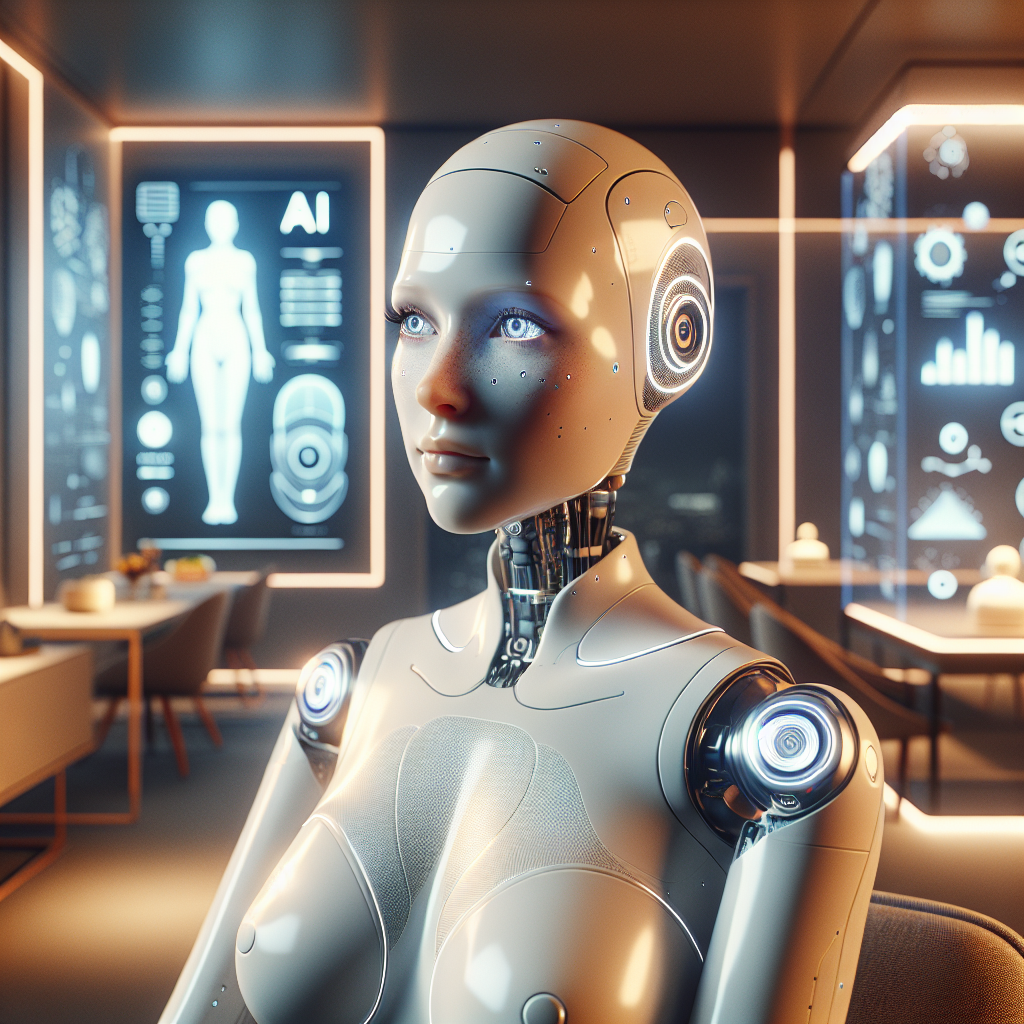Chinese Sex Doll Maker Sees Jump in 2025 Sales as AI Improves User Experience
The sex doll industry has witnessed significant transformations over the years, largely due to advancements in technology and changing societal attitudes toward artificial intimacy. Among the front-runners in this niche market is a Chinese sex doll manufacturer that anticipates a remarkable increase in sales by 2025, driven predominantly by improvements in artificial intelligence (AI). As interest in these advanced products grows, it raises questions about the future of human-robot interactions and the ethical considerations surrounding them.
The Evolution of Sex Dolls
Historically, sex dolls have been perceived as mere physical objects designed for sexual pleasure. However, recent advancements have turned these once simple toys into sophisticated companions featuring lifelike characteristics. Current models boast realistic skin textures, customizable features, and even voice capabilities that allow for interaction. This evolution has led to a broader acceptance of sex dolls as not just tools of pleasure but also as companions that can fulfill emotional needs.
The Role of Artificial Intelligence in Enhancing User Experience
The integration of AI into sex dolls is a game-changer in the industry. AI technology enables these products to engage users in more meaningful ways. Here are some ways AI is enhancing the overall user experience:
1. Realistic Interaction: With AI, sex dolls can mimic human conversation and respond to user inputs in a way that feels more authentic. This capability allows for personalized interactions, making users feel more connected to their dolls.
2. Customizable Personalities: AI algorithms can adapt and learn from user preferences, enabling the doll to develop a tailored personality that suits individual desires. Whether one prefers a playful companion or a more serious confidante, the AI can adjust its responses accordingly.
3. Enhanced Emotional Support: As society becomes more isolated due to various factors such as technology and the pandemic, many individuals seek companionship. AI-driven dolls can provide emotional support, helping users combat loneliness and social anxiety.
4. Continuous Learning: The AI in these dolls can learn from user interactions over time, becoming not just a static companion but a dynamic partner that evolves with the user’s preferences.
Market Trends and Projections
With the surge in interest and innovation in AI-driven sex dolls, the market is poised for substantial growth. According to industry analysts, the Chinese sex doll manufacturer forecasts a significant jump in sales by 2025. This projection is supported by several factors:
– Changing Social Norms: As societal attitudes toward sex and intimacy evolve, more individuals are open to exploring artificial companions. The stigma surrounding sex dolls is gradually dissipating, allowing for increased acceptance.
– Technological Advancements: Continuous improvements in AI and robotics translate to better, more lifelike products. As technology becomes more accessible, manufacturers can produce high-quality dolls at competitive prices.
– Increased Consumer Demand: The pandemic has led many people to seek alternative means of companionship. The growing market for sex dolls reflects a shift in consumer desires, with many considering these dolls as viable options for companionship.
Challenges and Ethical Considerations
Despite the promising future for AI-driven sex dolls, this industry does not come without challenges. Ethical concerns surrounding artificial intimacy must also be addressed. Some of the primary issues include:
1. Impact on Human Relationships: As individuals grow more reliant on artificial companions, there is concern about the potential decline in human-to-human relationships. Will people become more comfortable with virtual interactions, ultimately affecting their social skills?
2. Objectification and Gender Issues: The rise of lifelike sex dolls may further entrench harmful stereotypes and objectification, especially if the dolls are predominantly modeled on unrealistic body types.
3. Data Privacy: AI-driven products often collect user data to enhance personalization. This raises significant concerns regarding the privacy and security of sensitive information. Users must be aware of how their data is used and protected.
4. Legal and Regulatory Framework: As the market for sex dolls expands, lawmakers face the challenge of creating regulations that protect both consumers and manufacturers. This includes considerations around consent, especially as dolls become increasingly lifelike.
The Future of Human-Robot Relationships
As we look towards the future, the increasing popularity of AI-driven sex dolls raises essential questions about the nature of companionship and intimacy. While some may view these dolls as mere novelties or tools for pleasure, others argue that they represent a significant shift in how we understand relationships.
The ability for these dolls to provide both companionship and emotional support marks an important evolution in human-robot interactions. As technology continues to advance, the lines between human-like robots and actual humans may blur further, challenging our perceptions of love, intimacy, and connection.
Conclusion
The Chinese sex doll manufacturer’s prediction of a sales surge by 2025 is a testament to the potential of AI in this niche market. With its ability to enhance user experience through realistic interaction and emotional support, AI technology is transforming the way we perceive intimacy and companionship. However, as this industry continues to evolve, it is crucial to tackle the ethical challenges that arise and to foster a conversation around the implications of artificial intimacy in our lives.
As we navigate through these changes, one thing remains clear: the future of human-robot relationships is not just a possibility—it’s already becoming a reality.



